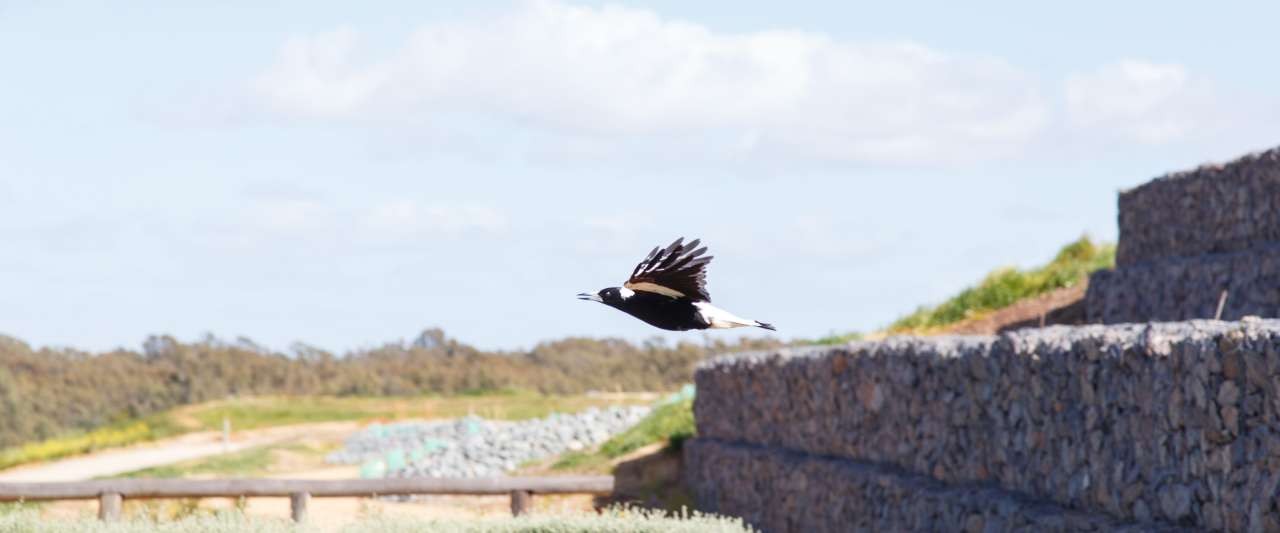Biodiversity – What you can do

There are many ways you can get involved with learning about native vegetation and the fauna such as our birdlife that live in our vegetation.
Get involved
Council hosts annual tree-planting days, and has a variety of sites you can visit to see our wonderful native flora and fauna.
- One Tree Per Child/National Tree Day
- Native Urban Parks are planted with predominantly indigenous plant species. These parks provide an opportunity to view plants that can be grown in your own garden, that require much less water and fertiliser than introduced species, and also benefit our native birds and wildlife. Various other parks are in the process of having local species planted including Victoria Park Lake and new housing developments.
- Trust for nature rate rebate — Council offers a rate rebate to landholders with a Trust for Nature conservation covenant.
- Aussie Backyard Bird Count is a national citizen science project run by BirdLife Australia. For a week in October every year, people are able to contribute vital knowledge on how our birds are responding to changes in our environment. This helps us to understand how these changes are impacting what birds we see and how many there are.
- Australian Botanic Gardens Shepparton — Established in 2011, on a former landfill site, ABGS provides an inspirational, sustainable and unique landscape which showcases local, regional and other Australia plants in a diverse environment for the purpose of enjoyment, education, tourism and community strengthening.
- Organic Farm Registration ensures that Council uses the appropriate herbicides near organic farms within the municipality to ensure their organic standards remain.
-
A printable brochure containing a list of local native plants for your garden.
-
Scattered tress influences the occurrence of woodland birds: as the total area of scattered trees increases, so too does the number of bird species. More than 25 species of birds have been recorded in paddocks with scattered trees.
Native vegetation removals
Removal of any native vegetation can only be considered once all other options to retain vegetation have been exhausted. Our old, native hollow-bearing trees provide vital habitat, and it takes at least 100 years for hollows to form. Many Australian birds and marsupials can only nest in hollows, so removal of these trees for any reason causes irreversible damage to our wildlife. Best-practice agricultural irrigation systems and housing developments will retain all native vegetation by using fit-for- purpose designs.
Council is the key referral agency for any requests to remove native vegetation, and permits are required if you intend to remove, damage or lop native vegetation. Native vegetation removal must always be the last option considered when working in an area with native vegetation. Council’s Environment team can inspect for identification of Native Vegetation and advise on options to avoid removal.
Details on native vegetation guidelines and permits
Environment Victoria
Report illegal native vegetation removals and damage
It is illegal to remove or damage native vegetation (including dead trees) without a permit, and Council employs a compliance officer to investigate and prosecute illegal removals.
Illegal removals destroy vital habitat for wildlife, and any suspected illegal removals should be immediately reported to Council on 03 5832 9700 so Council can investigate.
Council will have all authorised removals on record. Be alert for suspicious activities including excavator activity near trees, piles of trees pushed up in a heap, or overnight burning which may indicate illegal activity.
Damage to native vegetation also includes 4WDing and motor-biking off designated tracks in reserves, damage from escaped stubble burns or campfires, and lopping dead trees for firewood.
Report littering to protect our rivers and habitat
Littering of any kind is illegal, as it harms our waterways, natural environments, and is unsightly. A healthy river system relies on high quality water entering the system during rainfall events. Stormwater from urban areas discharge into rivers, so any rubbish and pollution dropped in these areas can find its way to watercourses, endangering the wildlife that live there. Discarded plastic and waste can be ingested by animals, or tangle wildlife causing injury and death.
You can help protect our rivers and environment by ensuring all rubbish is correctly disposed of, and reporting any littering to the EPA.

